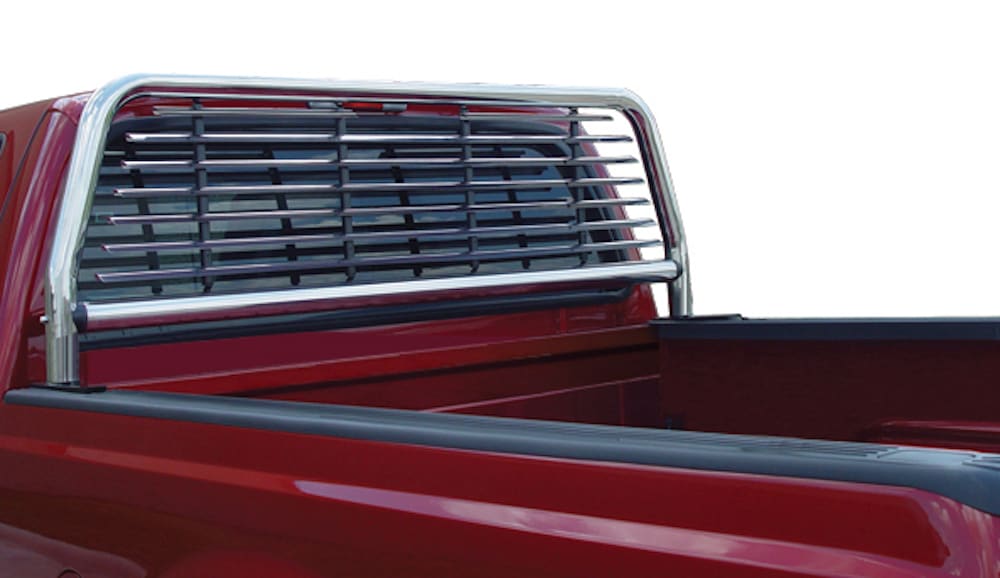

The headache rack is something that is typically seen on commercial vehicles and it is used to protect the back of the cab of the truck. It protects it by keeping anything that may be sliding around in the bed to come in contact with the rear of the cab, which can dent it or break the rear window. Installing a headache rack can help to protect your truck from damage. These can be fairly easy to build and install with the right tools and a little welding experience.
The headache rack is not commonly found on most daily driver trucks. It is found mostly on commercial vehicles that transport items in the bed. You will also see them built on flat-bed trucks such as tow trucks which protects the truck during harsh stops to keep the cargo from damaging the truck. There are an unlimited number of ways that you can build one, depending on the look you are going for. Many people even install lighting onto them.
Part 1 or 1: Building and installing the rack
Materials Needed
- 2” X 1/4” square steel tubing (approximately 30’)
- 2 12” X 4” X 1/2” steel plates
- 8 ½” X 3” grade 8 bolts with lock washers
- Drill with 1/2” drill bit
- Ratchet with sockets
- Steel chop saw
- Tape measure
- Welder
Step 1: Measure the top of the cab of your truck with the tape measure to determine how wide you want the rack to be.
Step 2: Using the tape measure, measure the distance from the outside of the top of the bed rails from the passenger side of the truck to the driver side.
Step 3: Measure the distance from the bed rail to the top of the cab to get the height of the rack.
Step 4: Using the chop saw, cut two pieces of the square steel to the two lengths for the width of the rack, and two equal pieces to match the height that you measured.
Step 5: Using the tape measure find the center of both pieces of steel being used for the length and mark it.
Step 6: Place the shorter piece of steel above the longer piece and align their center points.
Step 7: Place the two pieces of steel that were cut for the height between the top and bottom lengths about twelve inches in from the ends of the top piece of steel.
Step 8: Tack weld the steel together.
Step 9: Using the tape measure, find the length needed to go from the bottom end of the headache rack to the top end.
Step 10: Using the measurement that you just made cut two pieces of steel to he used as end pieces of the headache rack.
- Tip: Typically you can cut the ends at a thirty degree angle which will make it easier to weld them together.
Step 11: Tech weld the end pieces to the top and bottom rails.
Step 12: Stand up the headache rack and place the metal plates under each end as if they would be pointed towards the rear of the bed and tack weld them in place.
Step 13: Now that the headache is built you need to fully weld all of the joints together until they are solid.
Step 14: If you are going to paint the rack now is the time prior to installing it.
Step 15: Place the rack onto the bead rails of your truck being careful not to scratch it.
Step 16: Move the rack until it is in the location that you want to install it.
- Warning: The rack should be placed at least one inch from the cab and should not be making contact with it.
Step 17: Using your drill and the correct drill bit, drill four evenly spaced holes into each of the plates making sure that the holes extend all of the way through the bed rails.
Step 18: Install the four bolts that you have using the lock washers until they are snug by hand.
Step 19: Using your ratchet and the appropriate socket tighten the bolts until they are very tight.
Now that the headache rack is installed you want to make sure it is secure. You should push and pull on it to make sure that it does not move and that the welds are strong.
You have now built and installed your own headache rack onto your vehicle. By doing this you are protecting your truck’s cab from anything hitting it should it shift while driving. Keep in mind that when building a headache rack you can add as much metal to it as you would like to make it stronger or more decorative. Should you want to make it stronger you can add more of the same square tubed steel between each piece.
If you want to make it more decorative you can add smaller or thinner pieces of steel as you would like. When designing and building your rack you should always keep in mind the visibility limitations through the rear window. The more material that you add the harder it will be to see out. You should always try to keep it free of any obstructions directly behind the rear view mirror. If you are not good at welding or if you do not want to go this far in building your own rack you can always purchase one on your own. Pre-built racks are much more expensive but are far easier to install as they come ready to go out of the box.



